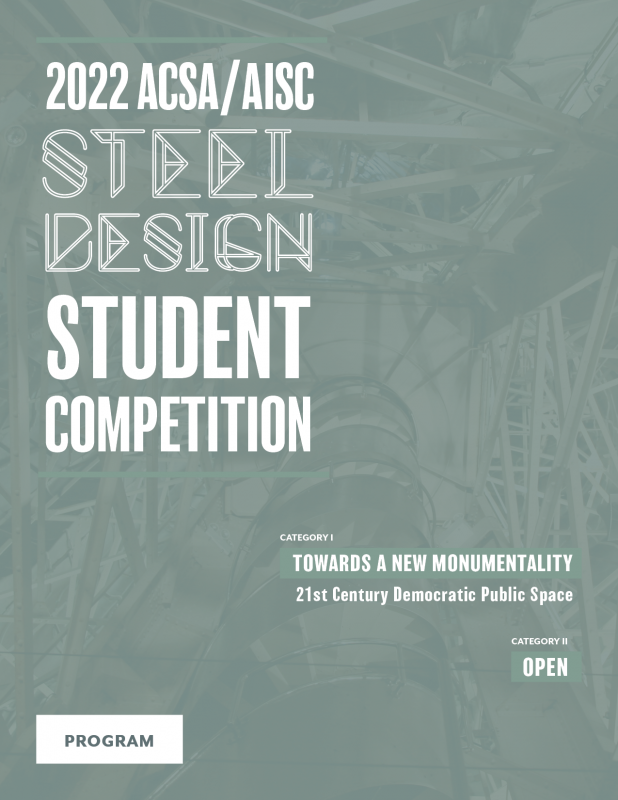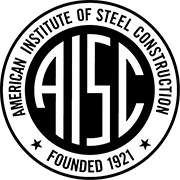Program
Category I: Towards a New Monumentality
On Commemoration and Memory
Few words have been so used in contemporary culture as the word “memory.” A key marker in diverse fields such as historiography, politics, psychoanalysis, visual and performative arts, information technology, and media studies, it also has impacted landscapes, architecture, public art, and public space. Memory is selective. Both personal and societal memories are always subject to construction, repression, and denial.
The construction of monuments, memorials, and museums all over the globe, as well as the significance that these sites of memory may have for affected communities, exemplify the unique lens through which the built environment can help us collectively process and experience memory. As a place of common remembrance, a monument or memorial is intended to be historically referential and direct attention to issues beyond itself.
The culture of memory may be found in the struggle for justice and human rights along with the remembrance of historical events, which are strongly linked to one another. Many communities and nations seek to create and to live in our modern society in the wake of mass exterminations, enslavement, apartheids, segregation, military dictatorships, and totalitarianism. In the past year alone, the way the Black Lives Matter movement transformed public streets into communal plazas has clearly illustrated the role that democratic public spaces in and of themselves can play in these fundamental conversations.
In recent years, significant discussions throughout US cities, and the globe, regarding the public significance of legacies and memories, and the meaning of public monuments and memorials, continue to take place. While memories can differ and historical facts can be emphasized (and/or obscured), many institutions, monuments, and public spaces have become much more ‘visible’ than ever before.
The Designer’s Role
To determine the conception and design of memorial spaces and democratic public spaces requires a persistent attempt to work within (and to transform) the public sphere, demands, dialogue and committed attitudes towards design, techniques and materials, sites of memory, history, and the voices of others, while especially establishing clear critical-ethical frameworks to position ourselves as engaged witnesses. The designer’s role entails practicing an art of ethical and purposeful transformation, while creating spaces that frame human experience, life, and seek a better future. Consider the significance of crafting inventive ways to approach memory and commemorative practices for our democratic societies. How do we position ourselves, when working on such projects involving the conception of memorial and democratic public spaces? As a result, we—architects, artists, public officials, public historians, public activists, and interested members of the community—find ourselves playing an important role in discourse about history, memory, ethics, politics, and the public domain.
Steel Competition
Towards a New Monumentality
How can various forms of commemorative practices in the built environment help communities work through and shed light on difficult, sometimes controversial, memories while inviting the public to engage in the necessary conversations to move forward together? This category asks students and faculty to create a new monumentality through the conception and creation of democratic public spaces for the 21st century. We welcome proposals of all kinds, which may include the transformation of public spaces, the creation of new public forums, and/or the conception and design of monuments and memorials.
Consider how democratic spaces can commemorate the past, engage with the present, and facilitate a common vision of the future. Your concept must engage proactively and affirmatively with architecture’s capacity to transform reality. It must include at least one space or element that requires a long-span steel structure and/or some form of structural investigation. It must also capitalize on steel’s unique properties to resist loads.
The Steel Competition challenges you to use curated space to foster and encourage new kinds of public engagement and ultimately make the world a better place. What does that look like to you?
Program
Students are asked to formulate their programs based on their conceptual approach to the themes they will engage with. While we strive for maximum openness to all forms of ideas, these proposals will need to include some form of programmed spaces (indoor auditoriums, exhibition areas, classrooms, service areas, outdoor covered spaces, etc.). The size, scale, and scope of these programs should be tailored to the concepts at stake and should be attentive to the use of steel as the primary structural material.
Requirements:
- Incorporate programmed spaces;
- Include at least one space or element that requires a long-span steel structure or structural steel investigation;
- Apply steel in an innovative design to resist loads.
Steel can be used and deployed in many ways, including, but not limited to, its indicative qualities, its visible or non-visible structural capacity, and as an expressive surface. At the same time that they will contend with conceptual, spatial and structural ideas and design, students and faculty will be asked to creatively investigate processes of construction, fabrication and installation, from the extraction of raw materials to the finished product, including the labor needed to produce and construct these works.
Site
The site for the competition is the choice of the student and/or faculty sponsor. However, the site should be accessible by alternative modes of transportation such as public transportation, biking, or walking. Submissions will be required to explain the site selection, strategy, and access graphically or otherwise.
Construction
The design project must be conceived in structural steel construction and must contain at least one space/element that requires a long-span structure and capitalize on steel’s unique properties to resist loads instead of just using steel in non-structural elements and finishes. The most compelling proposals should integrate the steel into the design of the project at multiple levels, from primary structure (beams, columns, frames, trusses) to building envelope and tectonic details.
Code
Students should refer to the International Building Code and the local zoning ordinance for information on parking requirements, potential height restrictions, setbacks, easements, flood, egress, and fire containment. Challenges to conventional rules—parking requirements, for example– are encouraged but should be explained, made explicit and integral to the overall solution.
Students may not enter both categories of the competition.
Questions
Edwin Hernández
Programs Coordinator
ehernandez@acsa-arch.org
202.785.2324
Eric W. Ellis
Senior Director of Operations and Programs
202-785-2324
eellis@acsa-arch.org

 Study Architecture
Study Architecture  ProPEL
ProPEL 

